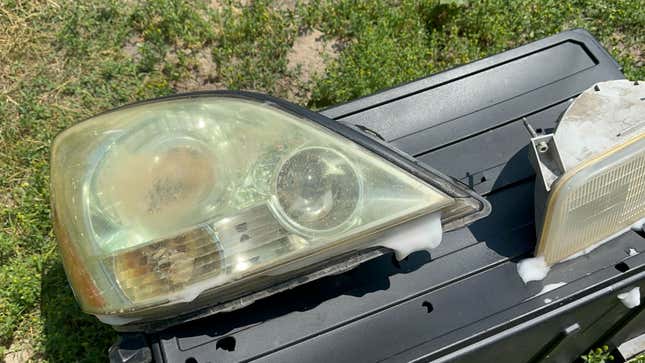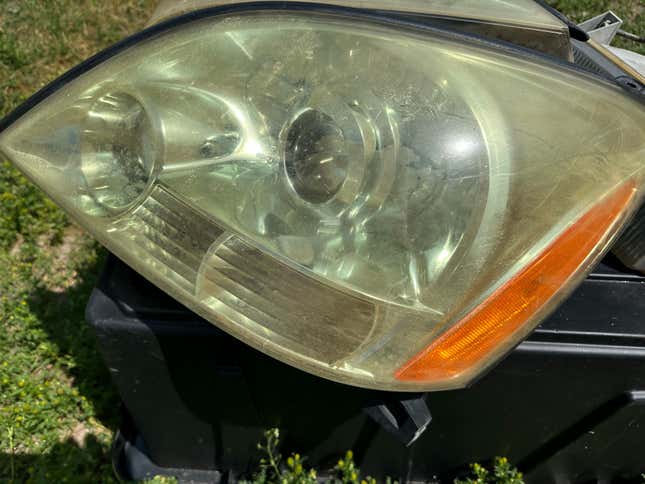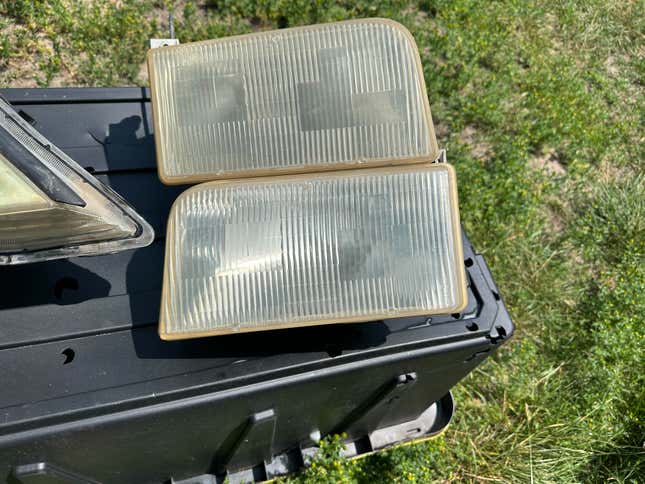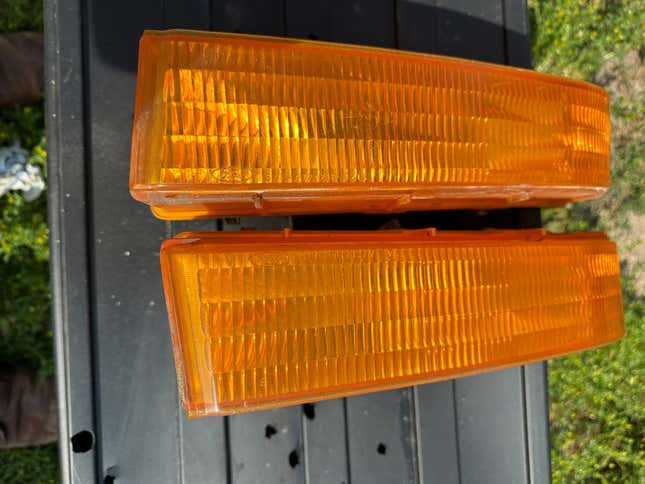If you’re occasionally irradiating your brain with TikTok like I am, you’ve probably seen an ad where a disembodied hand sprays a white foam onto a headlight, an interior door panel, or the arm of an excavator. Here’s a version of the ad.
The video speeds up, the foam slides off, and the hand wipes the now perfectly clean surface with a towel. There’s even a shot of it wiping a sun-faded headlight clean. If you’ve tried to restore headlights before you know that if the spray actually could actually do that, it’d be worth its weight in gold.
It can’t though. It can’t actually do anything, as far as I can tell.
Last year, I downloaded TikTok to keep an eye on a work account I was responsible for. I try not to look at it, because it makes me feel blank and bad. But there’s also some good car stuff on there and a lot stolen videos of people welding and machining things, and whatever else, so sometimes I’m there dissociating to the most aggressive content algorithm on the planet. And if you watch more than 10 seconds of a car video, you’re going to start seeing the ads.
You know it’s legit because there’s a picture of a Mercedes-Benz on the bottle with Mercedes-Benz logos unobscured, but you still wonder: Does this stuff actually work? Is it some kind of cleaner so powerful that it can’t be offered on the U.S. market?
According to my several minutes of more-or-less scientific testing, it doesn’t appear do anything at all. It definitely doesn’t do anything special.
Testing the TikTok Car Spray
As I alluded to earlier, the most extraordinary part of the TikTok ad is the headlight cleaning part, so that’s what I wanted to test first. I grabbed a set of old GX 470 headlights that I’d restored once, then replaced. Then I also grabbed a set of OEM plastic Ford F-150 indicators that had lived most of their lives in Colorado, and a set of glass headlights from the same car.

Here’s the GX headlight after I sprayed the foam on, let it sit until it started sliding off, then wiped it. The TikTok foam definitely removed the dust from the outside of the lens, but so did the Simple Green I tested alongside this stuff. Other than that, I didn’t really see a change in the surface. The sunbaked parts remained sunbaked.
It should be noted that a problem with any product that purports to clear sunbaked headlights is that a lot of the fog ends up being on the inside of the lens, and you can’t get to it without taking the lens off the headlight, which is often a huge pain in the ass.

I did the glass headlight from the Ford at the same time. In the photo below, the top light was left untouched and the bottom got the spray. The light I did use the spray on is a little cleaner, but it’s glass, so without polishing it, I don’t think it’s really reasonable to expect a big change.

Here’s a quick, terrible video of the test in real time:
The indicators were in better shape than the Lexus headlights, but the results were similar. The light on top in the photo below was cleaned, the light on the bottom wasn’t. The lens I used the foam on is a little cleaner than the one I didn’t touch, but the magic spray didn’t produce notably better results than using Simple Green, as you can see in the photo below.

Next, I decided to see if it worked as a degreaser. Short answer is that it doesn’t. The TikTok ad is pretty suspect here, showing the removal of what looks to be a recent application of some kind of oil or grease. But when faced with oil leaks from the Lada’s differential, steering box and transmission, the foam cleaner had almost no effect. Brake cleaner, Simple Green or any number of commercial degreasers would have been much better.
Again, here’s a bad video of me trying to clean some old grime off a Lada rear end that’s chilling by the side of my barn:
And here’s the magic spray attacking a Lada steering rack and transmission:
I haven’t yet tried it on interior upholstery, mainly because I don’t have anything really grimy laying around the house. Maybe I’ll run to the junkyard for that, but I don’t really have any reason to be hopeful.
The way the ad presents this stuff makes it seems like some kind of nasty super-chemical, so in the course of testing it, I was careful to wear gloves and a mask. It just seemed that if it does what it purports to do, it must be different than the cleaners we get here in the states. Now that I’ve tried it, I’d really like to know what’s actually in the bottle, so I’m going to try to send my second bottle out for analysis somewhere. Stay tuned.